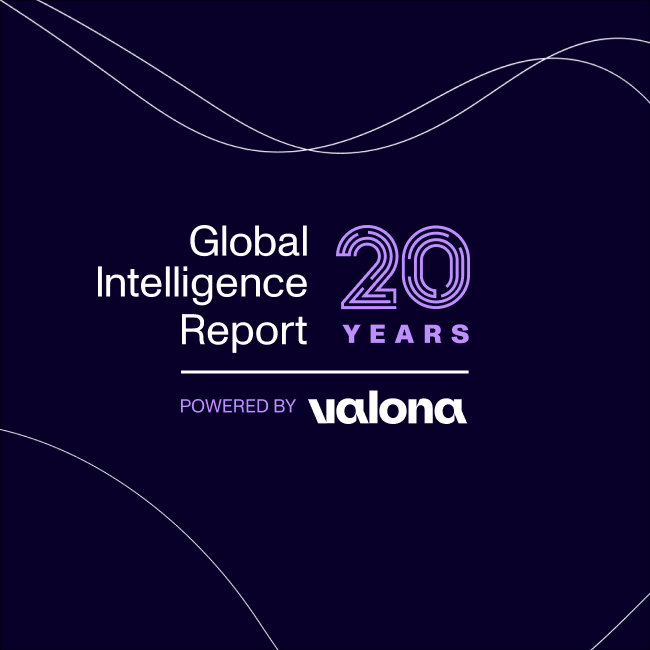
Crafting a winning Competitive Intelligence report for your brand
Learn how to craft a competitive intelligence report to guide your brand’s strategy. Look into types of CI reports from market analysis to SWOT, and maximize their impact.
Keeping an eye on the competition is vital, but the real magic lies in transforming that knowledge into reports that spark action. Competitive intelligence done right isn’t just about collecting data—it’s about shaping insights that drive smart moves and sharpen your edge.
A thoughtfully crafted CI report unveils market trends, decodes competitor strategies, and can even offer a glimpse into what they might do next, empowering your brand to stay one step ahead where it matters most.
This article explores the key types of competitive intelligence reports that can help your brand stay ahead.
The role of Competitive Intelligence reports in strategic decision-making
Competitive Intelligence (CI) reports are essential tools for shaping strategic business decisions. They provide a structured snapshot of your competitive field, pulling data from various sources to offer actionable insights.
These reports help you understand competitors, market trends, and customer behavior in a way that can directly inform your brand’s positioning and long-term strategy.
CI reports are comprehensive documents that gather data from multiple areas: market analysis, competitor benchmarking, customer feedback, and more. By aggregating this information, they distill raw data into meaningful insights, which can be used to guide business decisions.
They are tailored to address specific strategic needs—whether you’re looking to enter a new market, improve your products, or adjust your marketing approach.
For modern enterprises, CI reports are irreplaceable. They help you remain competitive in fast-moving markets by highlighting emerging opportunities, potential threats, and shifts in customer preferences.
In many sectors, such insights are key to staying ahead. The information in these reports allows businesses to be proactive in their decision-making, instead of simply reacting to changes after they’ve occurred. This is especially valuable in industries where anticipating market dynamics is key to sustained growth and success.
CI reports also provide a foundation for taking decisive, informed action. Based on the intelligence provided by them, you can set clear objectives based on real data, not assumptions, and prioritize initiatives that will have the most significant impact on your business.
These reports present a well-rounded view of your competitive strengths and weaknesses, helping you identify gaps in the market that your brand can capitalize on.
Moreover, CI reports drive cohesion across departments. Whether in marketing, product development, or sales, having everyone aligned with a unified understanding of the competitive field enables your company to make data-driven decisions that are consistent with broader strategic goals.
Types of Competitive Intelligence reports for comprehensive insight
1. Market analysis reports
Market intelligence reports help brands understand the overall field in which they compete. These reports provide a framework for making informed decisions by offering a detailed view of market size, trends, key players, and growth opportunities.
A well-crafted market analysis report typically includes several key components:
Industry trends: Identifying current and emerging trends helps you predict where the market is heading. Are there new technologies or shifts in consumer preferences? These insights shape future strategies.
Market size and growth projections: Knowing the size of the market and its potential for expansion is critical to planning. Accurate growth projections allow you to assess whether there’s room for your brand to scale.
Key market players: Understanding who the major competitors are and what strategies they employ offers a clearer picture of the competitive field.
Market drivers and barriers: Determining what fuels market demand (e.g., technological advancements) and what might restrict growth (e.g., regulatory challenges) allows you to anticipate both opportunities and risks.
Economic factors and consumer behavior: Factors such as inflation, unemployment rates, and shifts in consumer preferences can significantly impact your market position. Regulatory influences also play a role in determining what’s feasible and what’s constrained.
Market analysis reports are often leveraged for important business decisions like strategic planning and market entry. For example, if you’re considering launching a new product, these reports provide the data you need to evaluate market viability and growth potential.
You can also assess whether a new region or customer segment is worth pursuing by analyzing broader market dynamics.
However, creating an effective market analysis report comes with its challenges. One common challenge is information overload. Markets generate vast amounts of data, making it difficult to sift through everything.
The solution is to prioritize data sources aligned with your strategic goals, focusing on relevant metrics instead of trying to include everything.
Another challenge is the fast-paced nature of many industries. Keeping reports up-to-date can be difficult, especially when market conditions change rapidly.
To address this, incorporating real-time data sources and setting regular update cycles helps ensure your report remains relevant.
2. Competitor benchmarking reports
Competitor benchmarking reports are important for assessing how your brand stacks up against competitors. By analyzing key performance metrics, you can evaluate your position in the market and make strategic adjustments to outperform rivals.
These reports offer a clear view of where you excel and where there are opportunities to improve.
Key components of a competitor benchmarking report usually include detailed comparisons across several metrics:
Financial performance: Revenue, profit margins, and cost structures.
Market share: How much of the market your brand controls versus competitors.
Customer satisfaction: Reviews, customer retention rates, and net promoter scores.
Product performance: Feature sets, product lifecycle stages, and overall quality.
In addition to reviewing metrics, these reports often analyze the strengths, weaknesses, and strategic priorities of your competitors. For example, a competitor might have a stronger online presence but lag behind in customer service. You can spot specific areas to gain a competitive edge by identifying these dynamics.
Competitor benchmarking reports serve various purposes, they can:
Set realistic performance benchmarks based on competitor data.
Identify gaps in your operations by studying competitor advantages.
Fine-tune internal processes by understanding what competitors are doing better.
Spot strategic areas where your brand can differentiate itself in the marketplace.
However, creating an effective competitor benchmarking report involves overcoming some challenges:
Accessing competitor data: Competitor data isn’t always readily available. You can use public data from financial statements, industry reports, and third-party data providers, but make sure to validate this information to ensure reliability.
Ensuring objective analysis: Biases can easily skew your report. To avoid this, establish standardized benchmarks and use a balanced scorecard approach, which allows you to compare competitors across various weighted categories.
Competitor benchmarking is a powerful tool to evaluate and refine your brand’s position.
3. Customer insights reports
Understanding your customers is important for shaping both your product development and your marketing strategies. Customer insights reports gather and analyze key data points to give you a clear picture of who your customers are, what they need, and how they behave.
Your brand can create products that better align with customer expectations with this kind of intelligence, while also targeting your marketing efforts more effectively.
At the core of a customer insights report are the following components:
Demographic data: Age, gender, income, location, and other demographic details that define who your customers are.
Buying behavior: Patterns of how often customers purchase, what they buy, and their typical spend.
Customer preferences: Preferences in features, design, and price sensitivity.
Satisfaction levels: Insights from feedback, reviews, or survey data on how satisfied customers are with your products or services.
Pain points and loyalty drivers: Issues that frustrate customers or push them toward competitors, as well as the factors that keep them coming back.
Emerging customer needs: Trends in expectations or demands that are beginning to appear in the market.
These components help you to understand not only what your customers are doing, but also why they behave the way they do.
Identifying pain points allows you to make targeted improvements while understanding loyalty drivers helps you reinforce what’s working. Recognizing emerging needs lets you stay ahead of market shifts.
You can utilize customer insights reports in several ways. They are important for:
Product development: Informing the creation or adjustment of products to better suit customer preferences and solve pain points.
Customer retention strategies: Identifying the factors that drive customer loyalty so you can focus on retaining your core audience.
Marketing optimization: Refining your messaging, targeting, and campaigns based on real customer behavior, ensuring you’re reaching the right segments with the right message.
Segmenting your audience: Understanding which customer segments are more likely to respond to specific products or marketing strategies, thus allowing for personalized approaches.
However, creating an effective customer insights report comes with complexities. The first challenge is gathering accurate and comprehensive data. Many brands struggle to pull in data from multiple sources, leading to incomplete insights.
To address this, use a combination of data sources, such as:
CRM systems
Surveys and questionnaires
Social listening tools
These sources help you capture a balanced view of customer behavior and sentiment.
Another challenge is translating the data into actionable strategies. Insights alone won’t help unless they are directly linked to specific stages of customer exploration or product offerings.
For instance, you should focus on improving customer service for better retention, if your report identifies a frequent pain point during the post-purchase phase.
4. Product intelligence reports
Product intelligence reports evaluate the competitive field of products. They focus on identifying the strengths and weaknesses of both your brand’s products and those of your competitors, offering invaluable insights for strategic decision-making.
One of the key components of a product intelligence report is gathering detailed information on competitor products. This includes:
Product features and functionalities
Pricing structures
Market positioning strategies
Performance metrics in the market
Understanding how competitors’ products are performing can reveal significant gaps or opportunities in your own offerings.
Additionally, analyzing customer feedback is critical. This involves assessing online reviews, satisfaction ratings, and general sentiment toward competitor products.
By understanding the strengths and weaknesses of competitor products, you can make informed decisions about your brand’s product development and pricing strategies. For example, if a competitor’s product has a key feature that resonates strongly with customers, you might want to prioritize incorporating similar functionality into your own product roadmap.
On the flip side, identifying weaknesses in competing products can help you spot opportunities for innovation or improvement, giving your brand a competitive edge.
To craft an effective product intelligence report, make sure that the insights you gather always remain relevant. Instead of focusing on every possible data point, concentrate on the differentiators that matter most in your market and track how these evolve over time.
5. SWOT analysis reports
SWOT analysis reports provide a structured way to assess a brand’s internal strengths and weaknesses, as well as external opportunities and threats. With this type of report, you will understand where your brand currently stands in the competitive field and how it can improve its strategic positioning.
The four key components of a SWOT analysis are:
Strengths: What your brand does better than others, including unique resources or capabilities.
Weaknesses: Areas where your brand lacks, whether it’s in product, resources, or market performance.
Opportunities: External factors like market trends or untapped customer needs that could benefit your brand.
Threats: Risks or competitive pressures that could negatively impact your brand.
By combining internal data, such as resource availability or product capabilities, with external factors like industry trends or competitor strategies, a SWOT analysis equips you to make balanced and data-driven decisions.
SWOT is useful across several scenarios, especially when you’re engaging in strategic planning, assessing potential risks, or aligning business objectives with market realities.
It helps prioritize actions based on what your brand does well and the external opportunities that align with those strengths. It also highlights threats that need mitigation and weaknesses that require improvement.
One common issue when making SWOT reports is overlooking key internal or external factors. To avoid this, involve cross-functional teams in the analysis. This ensures a more comprehensive view of the organization’s capabilities and market dynamics.
Additionally, when translating the findings into action, you should tie specific objectives to each element of the SWOT, creating a follow-up plan that ensures actionable steps are taken.
6. Regional or global market reports
Regional or global market reports offer geographic-specific insights, helping businesses adapt to market variations and identify growth opportunities across borders.
One of the key elements of these reports is an in-depth analysis of specific regional markets. You’ll need to look into local competitors, consumer preferences, economic conditions, and regulatory environments in each target region.
This analysis allows you to see not only how your brand stacks up against local players but also how market dynamics might differ from what you’re used to in your home market. By comparing regions, you can spot which areas present growth opportunities or require tailored strategies.
Regional or global market reports provide actionable guidance for companies considering international expansion. You can use them to shape product adaptation strategies or localization efforts.
Additionally, these reports provide insights into how best to tailor marketing, pricing, or distribution approaches for a specific region, making them important for brands looking to optimize their global presence while remaining responsive to local needs.
Creating accurate regional or global market reports requires concentration on diverse regulatory environments across regions. Partner with local experts or consult regional market analysts who can help you maneuver through the complexities of different legal frameworks.
Further, adapt your findings in a way that honors regional preferences while staying true to your brand’s identity. This way, you can maintain a balance between local relevance and global brand consistency, and present a cohesive global strategy that still resonates with local audiences.
Maximizing CI report value for strategic decisions
1. Establish a clear purpose and audience
To maximize the value of any competitive intelligence (CI) report, you need to start by establishing a clear purpose and identifying the right audience. This ensures the report aligns with your business strategy and speaks directly to the stakeholders who will use the insights to make informed decisions.
First, define the report’s objectives. Every CI report should have specific goals that tie into broader business strategies, such as supporting a market entry, refining product positioning, or driving customer loyalty.
Clarifying the purpose early in the process helps you focus on the data and insights that matter most. For example, is the report meant to inform decision-making, find growth opportunities, or assess competitive threats? Defining these objectives upfront ensures the report stays relevant and actionable.
Next, identify the key stakeholders who will be the primary audience for the report. Depending on who will be reading it—whether it’s C-level executives, product teams, or sales and marketing—you should tailor the report’s content to their priorities.
Adjusting the focus for each group can significantly increase the report’s effectiveness. For executives, you might emphasize high-level insights like revenue potential or competitive positioning. For product teams, you could focus on product innovation or customer satisfaction metrics.
Finally, to measure whether the report is achieving its intended impact, set specific metrics. These could include key performance indicators (KPIs) such as market share growth, customer acquisition rates, or competitive positioning.
Establish a process to track these metrics over time to evaluate the report’s effectiveness. This allows you to adjust future reports to better serve your strategic goals.
2. Craft branded CI reports
Creating CI reports that reflect your brand’s identity plays an important role in reinforcing professionalism and securing trust among stakeholders. A consistent and branded approach creates familiarity, which leads to better engagement and long-term recognition.
First, use standardized templates across all CI reports. A cohesive design that includes consistent section headings, layout structures, and graphical elements ensures uniformity.
“We have put some more effort into the templates during the last couple of years and want that our products all have the same look and feel.”
Marjariitta Mandell, Senior analyst, Valmet
This uniformity signals reliability and boosts stakeholder confidence in the data. When reports look and feel the same every time, internal teams are more likely to rely on them as a regular decision-making tool.
Incorporating corporate colors, logos, and fonts strengthens this consistency. These elements align the reports with your brand’s identity. However, the placement of branding should be strategic. Avoid overshadowing the content itself. For instance, use corporate colors in charts or section dividers, ensuring the branding supports the report’s insights instead of distracting from them.
Another key to branded reporting is customization. Tailor the depth and visualizations of your reports based on your stakeholders’ needs. Senior management might prefer high-level summaries with branded infographics, while data analysts require detailed charts and granular data.
“Think not only how can you customize, think how can you actually bring this information to the stakeholders.”
Siiri Kärkkäinen, Communications Manager, Kela
Branded visuals help make key points more digestible and ensure that the report feels cohesive, regardless of its complexity.
3. Utilize data visualization and insightful summaries
When crafting a competitive intelligence (CI) report, you need to prioritize making the data easy to understand and actionable. Visual elements and clear summaries play a key role in ensuring that your insights are not only accessible but also impactful for decision-makers.
Integrating clear visuals such as graphs, charts, and tables helps readers quickly interpret the data. These visuals should be simple and well-organized to help highlight essential points. Use line charts to show trends over time or bar graphs to compare different competitors or market segments.
Always ensure each visual is clearly labeled and supported by concise explanations, so readers know exactly what they’re looking at and why it matters.
Executives often don’t have the time to go into every detail. A brief executive summary at the beginning of your report can provide them with the high-level insights they need. This summary should highlight the key findings and actionable recommendations in a few sentences.
Additionally, within each section of the report, use bullet points or short paragraphs to summarize critical takeaways. This allows readers to quickly digest the main message without wading through unnecessary information.
Dynamic charts and infographics can further improve engagement, especially when dealing with complex or dense data. Using these interactive elements allows you to present trends, comparisons, and relationships in a more engaging way.
An interactive heatmap might help highlight regional market performance, while a dynamic pie chart could show shifts in market share. Tailor these visuals to emphasize the most relevant data points for strategic decision-making.
4. Ensure data accuracy and timeliness
Ensuring the accuracy and timeliness of data is fundamental to making competitive intelligence (CI) reports actionable. Without up-to-date and reliable data, the insights drawn from these reports can quickly become irrelevant or misleading, ultimately compromising strategic decisions.
To maintain relevance, you should regularly update the data used in your CI reports. Markets shift rapidly, and failing to reflect these changes can result in missed opportunities or outdated strategies.
One effective method is to establish a schedule for periodic updates. This could involve setting monthly or quarterly review dates, depending on the pace of change in your industry. You can also use automated data feeds to align your reports with real-time market developments, reducing the manual effort required to keep information current.
Quality checks are equally important to avoid data misinterpretation. Implement a process for verifying the accuracy and relevance of your data sources before including them in any report.
Cross-verifying critical data points can help catch potential errors that might skew your analysis. For example, if you’re benchmarking competitor performance, ensure that the metrics you compare are consistent across all competitors to avoid drawing inaccurate conclusions.
Another important aspect is the reliability of your data sources. Use reputable sources such as industry reports, government databases, or proprietary tools. When you base decisions on credible data, the chances of flawed analysis decrease significantly.
Further, documenting the origin of each data point in the report improves transparency. This allows stakeholders to verify the information or look into specific insights further if needed.
5. Encourage feedback and iterative improvement
To ensure that competitive intelligence (CI) reports remain valuable over time, you need to gather consistent feedback and refine the report based on evolving business needs. Stakeholders who rely on the data are in the best position to provide insights into what works and what doesn’t, making them important partners in the improvement process.
First, establish feedback loops with stakeholders. Set up regular opportunities for them to comment on the report’s format, content, and relevance. This can be done through surveys, interviews, or informal feedback sessions, depending on what suits your organization’s culture.
“We learned a lot [from the feedback survey] because we thought that we knew all about our stakeholders, but we didn’t.”
Marjariitta Mandell, Senior analyst, Valmet
Next, analyze usage data to determine the effectiveness of different sections. Digital analytics tools help track how stakeholders interact with the report—measuring page views, time spent on each section, and identifying the most-visited areas.
This data-driven approach highlights high-impact sections that should be emphasized in future versions, ensuring the report stays aligned with stakeholder needs.
Finally, implement a structured process for incorporating feedback. Set priorities based on the potential impact of the suggestions and their feasibility. Regularly update report templates and formats to reflect these improvements and ensure the content stays fresh and relevant.
This iterative process will not only keep the report aligned with business objectives but also make it more actionable for decision-makers.
Final thoughts on building a competitive edge
Wrapping up, a competitive intelligence report offers essential insights to help your brand strategize with precision. Through effective use of market analysis, competitor benchmarking, and customer insights, a CI report empowers your teams to respond proactively to industry shifts and identify opportunities for growth. These reports bridge the data gap across departments, enabling informed, unified decision-making for lasting competitive advantage.
Valona’s insights-driven solution helps you streamline CI reporting with seamless data integration, precise market analytics, and customizable reporting that aligns with your brand’s strategy.
Hear directly from industry experts who crafted these insights and learn best practices for embedding CI into every level of your organization—watch our on-demand webinar to explore how insights-driven branding can propel your brand forward.
FAQ
How to write a competitive intelligence report?
Start by identifying objectives, gathering data from reliable sources, and analyzing competitors’ strategies, market trends, and customer insights. Structure the report to include an executive summary, key findings, and actionable recommendations, ensuring clear, concise insights for strategic decision-making.
What does a competitor intelligence report include?
A competitor intelligence report typically includes analyses of competitors’ market positions, financial performance, product features, customer satisfaction, strengths, weaknesses, and potential strategic moves. It provides actionable insights to refine your brand’s strategy and identify growth opportunities.
What is the competitive intelligence analysis?
Competitive intelligence analysis involves gathering and interpreting data on competitors, market trends, and consumer behaviors to inform strategic decisions. This analysis helps identify opportunities, anticipate threats, and optimize positioning, product development, and marketing.
How does a competitive intelligence report benefit strategic decision-making?
A competitive intelligence report benefits strategic decision-making by offering a structured analysis of competitors and the market. This insight helps align business objectives with market realities, allowing for proactive, data-driven strategies that enhance competitiveness.
How often should competitive intelligence reports be updated?
Competitive intelligence reports should be updated regularly—monthly or quarterly—depending on industry dynamics. Frequent updates ensure the information remains relevant and reflects recent market changes, helping to maintain a competitive edge.




